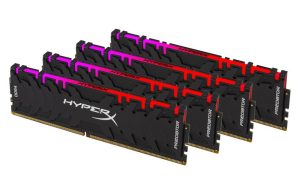Can You Mix RAM Brands
In the realm of computer hardware, RAM (Random Access Memory) plays a crucial role in the overall performance and responsiveness of a system. With the abundance of RAM options available on the market, users often wonder whether it’s possible to mix RAM modules from different brands without encountering compatibility issues. In this article, we delve into the concept of mixing RAM brands, exploring its feasibility, potential benefits, risks, and best practices.
The Concept of Mixing RAM Brands
What It Means to Mix RAM Brands
Mixing RAM brands refers to the practice of installing memory modules manufactured by different companies within the same computer system. This could involve using modules with varying specifications, such as speed, capacity, latency, and voltage.
Potential Compatibility Issues
While modern computer systems are designed to be versatile and accommodating, mixing RAM brands can sometimes lead to compatibility issues. These issues may manifest as system instability, boot failures, or performance degradation.

Factors to Consider
Speed and Latency
RAM modules operate at different speeds and latencies, which can impact their compatibility when mixed. It’s essential to ensure that the modules have similar specifications to prevent performance discrepancies.
Capacity
Mixing RAM modules of different capacities can be feasible, but it’s crucial to consider how the system will handle the uneven distribution of memory. In some cases, dual-channel or quad-channel configurations may be affected.
Voltage
RAM modules require specific voltage levels to operate correctly. Mixing modules with different voltage requirements can potentially damage the components or lead to system instability.
Timing
The timing parameters of RAM modules, such as CAS latency and tRCD, should ideally match to ensure optimal compatibility and performance.
Benefits of Mixing RAM Brands
Cost Efficiency
Mixing RAM brands allows users to take advantage of competitive pricing and promotions from different manufacturers, potentially saving money compared to purchasing identical modules from a single brand.
Flexibility
By mixing RAM brands, users have the flexibility to customize their system’s memory configuration according to their specific needs and budget constraints.
Risks of Mixing RAM Brands
Stability Issues
Incompatible RAM modules can cause system instability, leading to frequent crashes, freezes, or unexpected reboots.
Performance Degradation
Mismatched RAM modules may result in suboptimal performance, as the system may not operate at its full potential due to timing mismatches or other compatibility issues.
Warranty Concerns
Mixing RAM brands could void the warranty provided by individual manufacturers, as they may not cover issues arising from the use of non-recommended configurations.
Best Practices for Mixing RAM Brands
Matching Specifications
Whenever possible, aim to match the specifications of mixed RAM modules, including speed, capacity, voltage, and timing parameters.
Testing Compatibility
Before committing to a mixed RAM configuration, conduct thorough compatibility testing to ensure stability and performance under various workloads.
Overclocking Considerations
If overclocking is desired, ensure that all mixed RAM modules can handle the increased frequencies and voltages without compromising stability or longevity.

Real-World Experiences
Community Insights
Many users have successfully mixed RAM brands without encountering significant issues, relying on forums, communities, and online resources for guidance and troubleshooting.
Case Studies
Several case studies demonstrate the practicality and benefits of mixing RAM brands, showcasing improved cost-effectiveness and customization options for users.
Conclusion
In conclusion, while mixing RAM brands is technically feasible and can offer cost-saving benefits and customization options, it’s essential to proceed with caution. By considering factors such as speed, capacity, voltage, and timing, users can minimize compatibility issues and optimize system performance. However, thorough compatibility testing and adherence to best practices are crucial to mitigating potential risks and ensuring a stable and efficient computing experience.
FAQs
- Can mixing RAM brands improve performance?
- While mixing RAM brands can offer benefits such as cost efficiency and flexibility, it may not necessarily improve performance, as compatibility issues can lead to suboptimal operation.
- Will mixing RAM brands void warranties?
- Mixing RAM brands could potentially void warranties provided by individual manufacturers, as they may not support configurations outside of their recommendations.
- How can I test the compatibility of mixed RAM modules?
- Compatibility testing involves installing and running the mixed RAM modules under various workloads to ensure stability and performance. MemTest86 and other diagnostic tools can be useful for this purpose.
- What should I do if I encounter stability issues after mixing RAM brands?
- If stability issues arise, try reseating the RAM modules, updating the system BIOS, and adjusting RAM timings and voltages in the BIOS settings. If problems persist, consider reverting to a single-brand configuration or seeking assistance from technical support.
- Are there any specific brands known to be more compatible when mixed?
- While some users may have personal preferences based on their experiences, there isn’t a definitive answer as compatibility can vary depending on the specific modules and system configurations involved.









